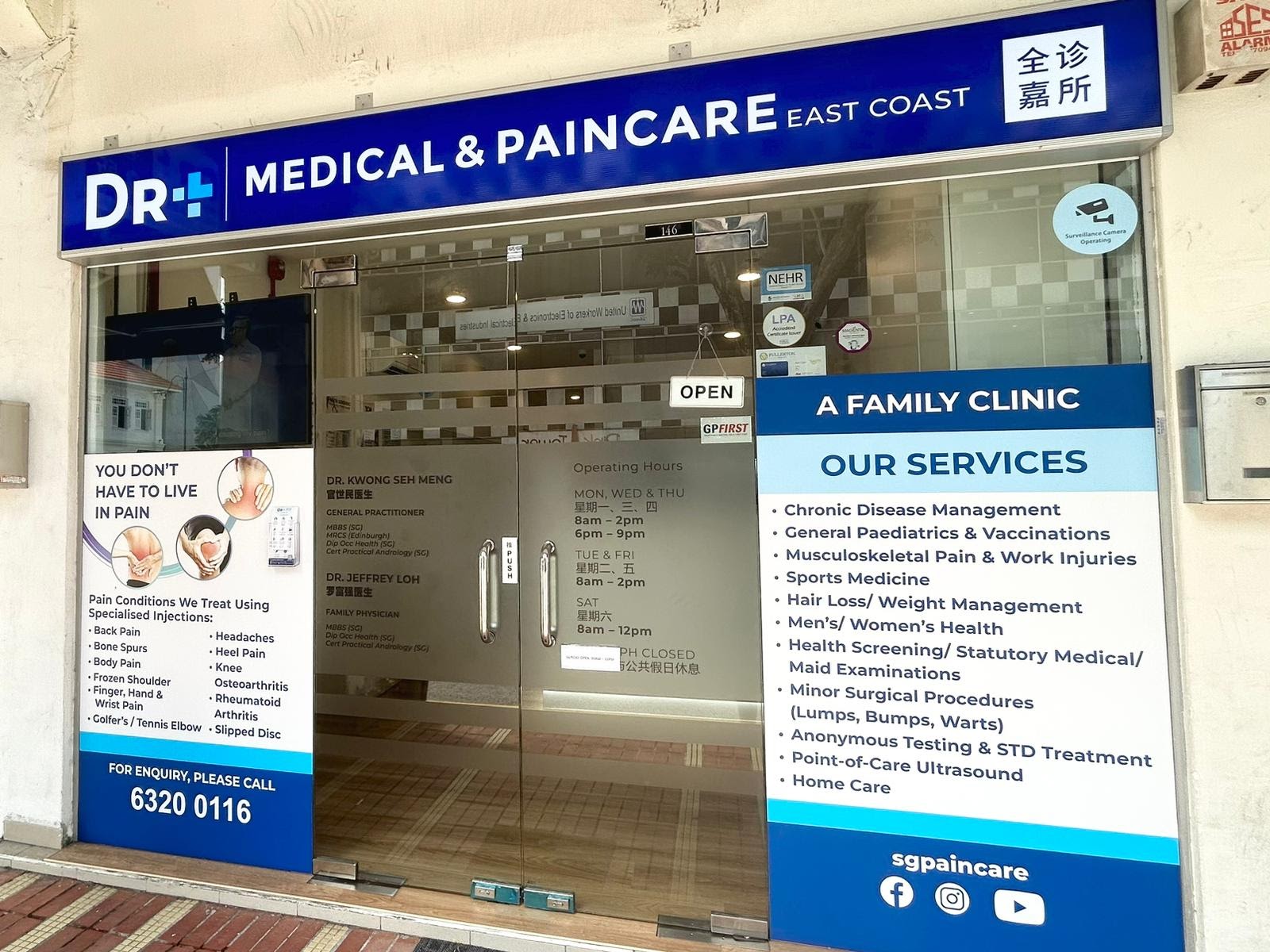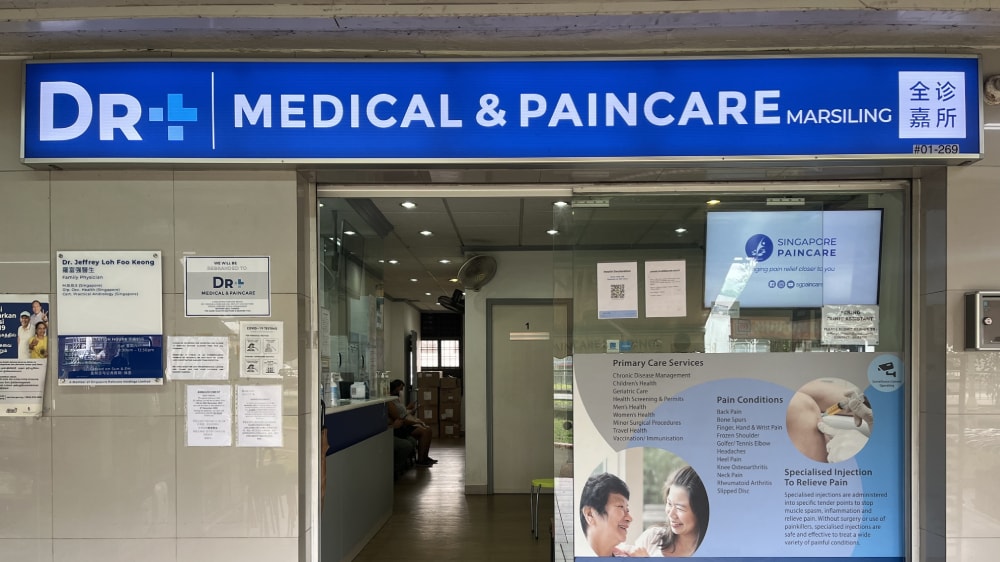Headache (Migraine, Tension Headaches)

What are Headaches
Headaches are a common health complaint, characterised by pain in any region of the head. They may occur on one or both sides of the head, be isolated to a certain location, radiate across the head from one point, or have a viselike quality. It could appear as a sharp pain, a throbbing sensation, or a dull ache, and can develop gradually or suddenly. The frequency of headaches varies among individuals, with some experiencing headaches occasionally, while others experiencing them more regularly.
Types of Headaches
Headaches are broadly classified into two categories: primary and secondary.
Primary Headaches
Primary headaches are not symptoms of another medical condition. Common types include:
- Tension Headaches: These are the most prevalent type of primary headaches. It presents as a constant ache or pressure around the head, especially at the temples or back of the head and neck. Tension headaches do not usually cause nausea or vomiting.
- Migraines: These are characterised by a pulsating, throbbing pain on one side of the head, accompanied by nausea, vomiting, and sensitivity to light and sound. They can last for hours to days and can affect daily activities.
- Cluster Headaches: These are marked by severe, piercing pain around one eye or on one side of the face. These headaches occur in groups, or “clusters,” and each headache can last from 15 minutes to three hours.
Secondary Headaches
These are symptomatic of another condition that stimulates the pain-sensitive nerves of the head. Examples include headaches associated with a stroke, brain tumour, or hypothyroidism.
Signs and Symptoms
Primary Headache
Symptoms of migraines include pulsating or throbbing pain on one side of the head, sensitivity to light, sound, and sometimes smells and touch, nausea and vomiting, blurred vision, and occasionally lightheadedness that could lead to fainting.
Tension headaches typically involve a dull, aching head pain with a sensation of tightness or pressure across the forehead or on the sides and back of the head. It could also lead to tenderness on the scalp, neck, and shoulder muscles.
Symptoms of cluster headaches include intense burning or piercing pain behind or around one eye, watery eye, and nasal congestion on the same side as the pain.
Secondary Headache
Secondary headaches exhibit symptoms that vary based on the underlying cause, such as fever, neck stiffness, or sinus pressure, in addition to the typical headache pain.
Struggling With Persistent Pain?
Consult one of our DR+ today for a detailed consultation & personalised treatment plan.
Causes and Risk Factors
Primary Headaches
The specific causes of tension headaches and migraines are not known. They may be caused by overactivity or problems with pain-sensitive structures in the head, with triggers including:
- Genetic factors: Migraines can be hereditary.
- Stress: This is commonly associated with tension headaches.
- Environmental Triggers: Such as lights, sounds, and strong smells.
- Lifestyle Factors: Including poor posture, lack of sleep, skipped meals, or alcohol use.
Cluster headaches may be caused by abnormalities in the hypothalamus or the sudden release of the chemical histamine.
Secondary Headaches
Secondary headaches are symptoms of another condition that activates the pain-sensitive nerves of the head. Causes include:
- Stroke
- Brain tumour
- Aneurysm
- Infections, such as meningitis
- Hypothyroidism
- Sinus infections, which lead to sinus headaches
- Head injury or concussion
- High blood pressure
- Medication overuse or side effects
- Temporal arteritis
- Pregnancy
Treatment Modalities
Pain Medication
This involves the use of medications such as Non-Steroidal Anti-Inflammatory Drugs (NSAIDs), opioids, and other specialised medications designed for pain management. The type and dosage are tailored to the individual’s condition and medical history.
Myospan
Minimally invasive treatments aim to effectively relieve common pain conditions by targeting pain sources.
- Coreflex Injections: Typically contain a corticosteroid and are used for inflamed joints or tissues.
- Platelet-Rich Plasma (PRP) injections: Utilise own platelets to promote healing in damaged tissues.
- Intra-Articular Injections: Most commonly used to treat osteoarthritis in the hip or knee, but they can also be given in other joints, including shoulders, wrists, ankles, hands, and fingers.
For chronic pain conditions originating from spinal issues, Neurospan can be performed by our team of pain specialists from Singapore Paincare Center.
Prevention Strategies
Preventing headaches involves a combination of lifestyle changes, identifying and avoiding triggers, and, in some cases, preventive medications.
- Lifestyle Modifications: Regular physical activity, adequate sleep, staying hydrated, balanced meals, and stress management can reduce the frequency and severity of headaches.
- Avoiding Triggers: Identify and avoid individual triggers, such as certain foods, drinks, or environmental factors.
- Stress Management: Techniques such as yoga, meditation, and relaxation training can help manage stress, which is a common trigger for tension headaches.
- Posture and Ergonomics: Maintain good posture and set up a work environment that does not strain the neck.
- Regular Schedule: Keeping a consistent sleep schedule and eating meals at regular times can help reduce the likelihood of headaches.
- Preventive Medications: These may be prescribed to those who experience frequent or severe headaches. Preventative medications should be taken regularly to achieve optimal efficacy.
Frequently Asked Questions
What is the difference between a migraine and a tension headache?
Migraines typically present as a pulsating or throbbing pain on one side of the head, often accompanied by nausea, vomiting, and sensitivity to light and sound. Tension headaches are characterised by a dull, aching pain across the forehead or on the sides and back of the head.
Can headaches be a sign of something more serious?
While most headaches are not indicative of a serious medical condition, certain symptoms warrant immediate medical attention. These include a sudden, severe headache, a headache accompanied by fever, stiff neck, rash, confusion, seizure, double vision, weakness, numbness, or difficulty speaking.
How can I tell if my headache is due to stress?
Stress-related headaches, often tension-type, are typically characterised by a dull, aching pain and a sensation of tightness or pressure around the forehead or back of the head and neck.
Are headaches hereditary?
Certain types of headaches, particularly migraines, can have a genetic component. If family members suffer from migraines, there is an increased chance of developing them.
Can lifestyle changes help prevent headaches?
Yes, lifestyle changes such as regular exercise, adequate hydration, a balanced diet, sufficient sleep, and stress management can reduce the frequency and severity of headaches.
Is it necessary to see a doctor for headaches?
Consult a doctor if headaches are severe, frequent, or interfering with daily life. If there is a change in the pattern of headaches or if they are accompanied by other symptoms like visual disturbances or nausea, notify your doctor immediately.
Our Clinics
- Mon, Tue & Thu: 9am to 1pm, 2pm to 4pm, 6:30pm to 9:30pm
- Wed & Fri: 9am to 1pm, 2pm to 4pm
- Sat: 9am to 1pm
- Closed on Sun & PH
-
(Kindly note that clinic’s last registration is 15mins before closing time.)
- Mon, Wed, Thu: 8:00am – 2:00pm, 6:00pm – 9:00pm
- Tue & Fri: 8:00am – 2:00pm
- Sat: 8:00am – 12:00pm
- Sun: 10:00am – 1:00pm
- PH: Closed
#01-54 The Midtown, Singapore 533971
- Mon to Fri: 8:00am – 12:00pm, 1:00pm – 3:00pm, 6:00pm – 9:00pm
- Sat: 8:00am – 12:00pm
- Sun & PH: Closed
988 Upper Serangoon Rd, Singapore 534733
- Mon to Fri: 8:30am – 2:30pm, 6:00pm – 10:00pm
- Sat & Sun: 8:30am – 12:30pm
- PH: Closed
-
(Kindly note that clinic’s last registration is 15mins before closing time.)
Singapore 730018
- Mon: 8:00am – 9:00pm
- Tue – Fri: 8:00am – 4:30pm, 7:00pm – 9:00pm
- Sat: 8:00am – 12:30pm
- Sun & PH: Closed
-
Kindly note that clinic’s last registration is 15mins before closing time.
-
(Last registration timing – Mon: 8:45pm, Tue – Fri: 4:15pm & 8:45pm, Sat: 12:15pm)
Thomson Imperial Court, Singapore 574424
- Mon to Wed: 8:30am – 10:00pm
- Thu: 8:30am – 3:00pm, 6:00pm-9:30pm
- Fri: 8:30am – 6:00pm
- Sat & Sun: 9:00am – 3:00pm
- PH: Closed
-
(Kindly note that clinic’s last registration is 15mins before closing time.)
- Mon, Wed & Fri: 8:30am – 12:30pm, 1:30pm – 4:30pm, 6:00pm – 9:00pm
- Tue & Thu: 8:30am – 12:30pm, 1:30pm – 4:30pm
- Sat: 8:30am – 12:30pm
- Closed on Sun & PH
-
(Kindly note that clinic’s last registration is 15mins before closing time.)
Need Advice On Your Condition?
Please fill out the form and we will be in touch with you shortly.







